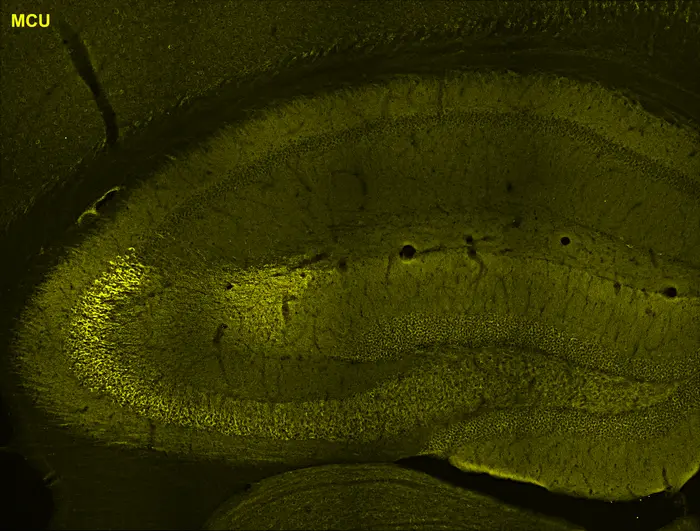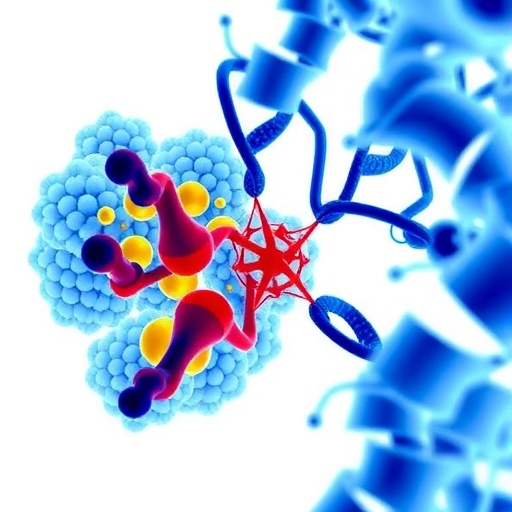Virginia Tech neuroscientists have made a groundbreaking discovery regarding the critical role of mitochondria in neurons associated with learning, memory, and social recognition. This innovative research led by Shannon Farris, an assistant professor at the Fralin Biomedical Research Institute at Virginia Tech, focuses on the mitochondrial calcium uniporter (MCU), a protein that facilitates calcium entry into mitochondria, underscoring its pivotal function in enhancing neural connections. The research utilized mouse models to scrutinize the hippocampal CA2 subregion, which is essential for social recognition memory, revealing insights with significant implications for understanding neurocognitive processes and disorders.
Published in the esteemed journal Scientific Reports, this study highlights how MCU expression is integral to the morphological development of dendritic mitochondria, which directly relates to synaptic plasticity — a fundamental mechanism through which neurons adapt and form new connections. This adaptive process is crucial for cognitive functions and learning capabilities, emphasizing the importance of mitochondrial health in maintaining optimal brain function. The findings paint a clearer picture of the intricate relationship between mitochondrial dynamics and neuronal activity, illuminating potential pathways for therapeutic interventions in neurodegenerative diseases.
One of the remarkable aspects of this research is the unique behavior of CA2 neurons compared to their neighboring hippocampal counterparts. The research team found that these neurons exhibit a resistant nature to certain types of synaptic plasticity, setting intriguing questions about their specialized roles within the brain’s memory circuitry. Such nuances underscore the complexity of neuronal function and offer a deeper understanding of how specific subnetworks contribute to broader cognitive processes.
To delve deeper into the functional significance of these discoveries, the researchers employed advanced genetic engineering techniques. By selectively deleting the MCU gene in CA2 neurons of genetically modified mice, the team observed notable disruptions in synaptic plasticity at the remote synapses located at the neuron’s outermost dendritic regions. Interestingly, synapses closer to the cell body remained unaffected, illustrating that mitochondrial variation is not merely incidental; rather, it is a crucial element that allows distinct regions of the same neuron to perform specialized functions.
Farris articulated that the notion of mitochondrial diversity transcends biological curiosity—it represents an essential characteristic of neuronal function. The study suggests a paradigm shift in how we perceive mitochondrial roles within neurons, moving away from the traditional view of uniform functionality and embracing the idea that mitochondria adapt their characteristics to meet the diverse energetic and signaling needs of different synapses.
The implications of these findings extend beyond basic neuroscience, touching on pressing issues related to neurological disorders. Mitochondrial dysfunction has emerged as a significant factor implicated in a vast array of conditions, including Alzheimer’s disease, autism spectrum disorders, and schizophrenia. As synapses demand substantial energy for effective information processing and connectivity, any disruption in mitochondrial functionality can compromise these vital processes, leading to cognitive impairments and neurodegeneration.
The research illuminates a potentially crucial area of vulnerability in Alzheimer’s disease—specifically, the most distal synapses which are often the first to succumb to the disease’s pathological effects. By shedding light on how MCU influences synaptic integrity in CA2 neurons, the study offers novel insights that could inform our understanding of why particular circuits are predisposed to degeneration in neurodegenerative diseases and suggests avenues for developing targeted therapeutic strategies.
Furthermore, the implications of this research extend to the field of developmental neuroscience. The uniqueness of CA2 neurons may also hold keys to understanding social cognition. Farris posited that the dysfunction of CA2 neurons could be linked to the social deficits commonly observed in individuals with autism, highlighting the broader relevance of mitochondrial dynamics in understanding complex neurodevelopmental disorders.
Technological advancements played a critical role in this research. The team utilized electron microscopy combined with artificial intelligence to meticulously map mitochondrial structures within the dense neuronal environments of CA2 dendrites. This state-of-the-art approach enabled the researchers to achieve unprecedented accuracy and spatial resolution in visualizing the mitochondria, marking a significant technological leap in studying mitochondrial function in the intricacies of neural circuits.
The specific findings regarding the structural characteristics of mitochondria deficient in MCU, which were observed to be smaller and more fragmented, provide valuable insights into how these physical alterations could hinder synaptic effectiveness, highlighting the interconnectedness between mitochondrial architecture and neural performance.
As the research team’s endeavors progress, they aim to unravel the mechanisms behind the development of specialized mitochondrial properties within CA2 neurons and understand if similar adaptive processes are present in other neuronal populations. Their future investigations will not only deepen our comprehension of mitochondrial biology but may also pave the way for innovative therapeutic avenues aimed at preserving brain health and mitigating the effects of neurodegenerative diseases.
By advancing our understanding of mitochondrial diversity within neural circuits, Farris’ research points toward a more comprehensive approach to understanding how the brain learns, remembers, and adapts — and how we might protect these critical processes from the ravages of disease. In a broader sense, this research bears the potential to unlock foundational knowledge about human cognition and resilience, offering hope for advances in treatment methods for a range of neurological challenges that afflict millions globally.
This research emphasizes the profound interplay between mitochondrial health and cognitive function, advocating for a paradigm shift in how we approach both basic and applied neuroscience. As we continue to advance into this frontier of neural research, the critical interplay of mitochondria within neurons will likely remain a focal point of exploration, teeming with potential for groundbreaking discoveries that could redefine our understanding of brain function and health.
Subject of Research: Mitochondrial dynamics in CA2 neurons and their role in synaptic plasticity.
Article Title: MCU expression in hippocampal CA2 neurons modulates dendritic mitochondrial morphology and synaptic plasticity.
News Publication Date: February 6, 2025.
Web References: Scientific Reports
References: DOI
Image Credits: Shannon Farris/Virginia Tech.
Keywords: Mitochondria, synaptic plasticity, CA2 neurons, Alzheimer’s disease, autism spectrum disorder, neurodegenerative diseases, synaptic connections, cognitive function, mitochondrial health, neural circuits, hippocampus, energy regulation.
Tags: calcium uniporter role in neuronsdendritic mitochondria morphological developmenthippocampal CA2 subregion researchimplications of MCU expression in learning.Mitochondria and memory developmentmitochondrial health and brain functionneurocognitive processes and disordersneuronal activity and mitochondrial dynamicssocial recognition memory mechanismssynaptic plasticity and cognitive functiontherapeutic interventions for neurodegenerative diseasesVirginia Tech neuroscience study





